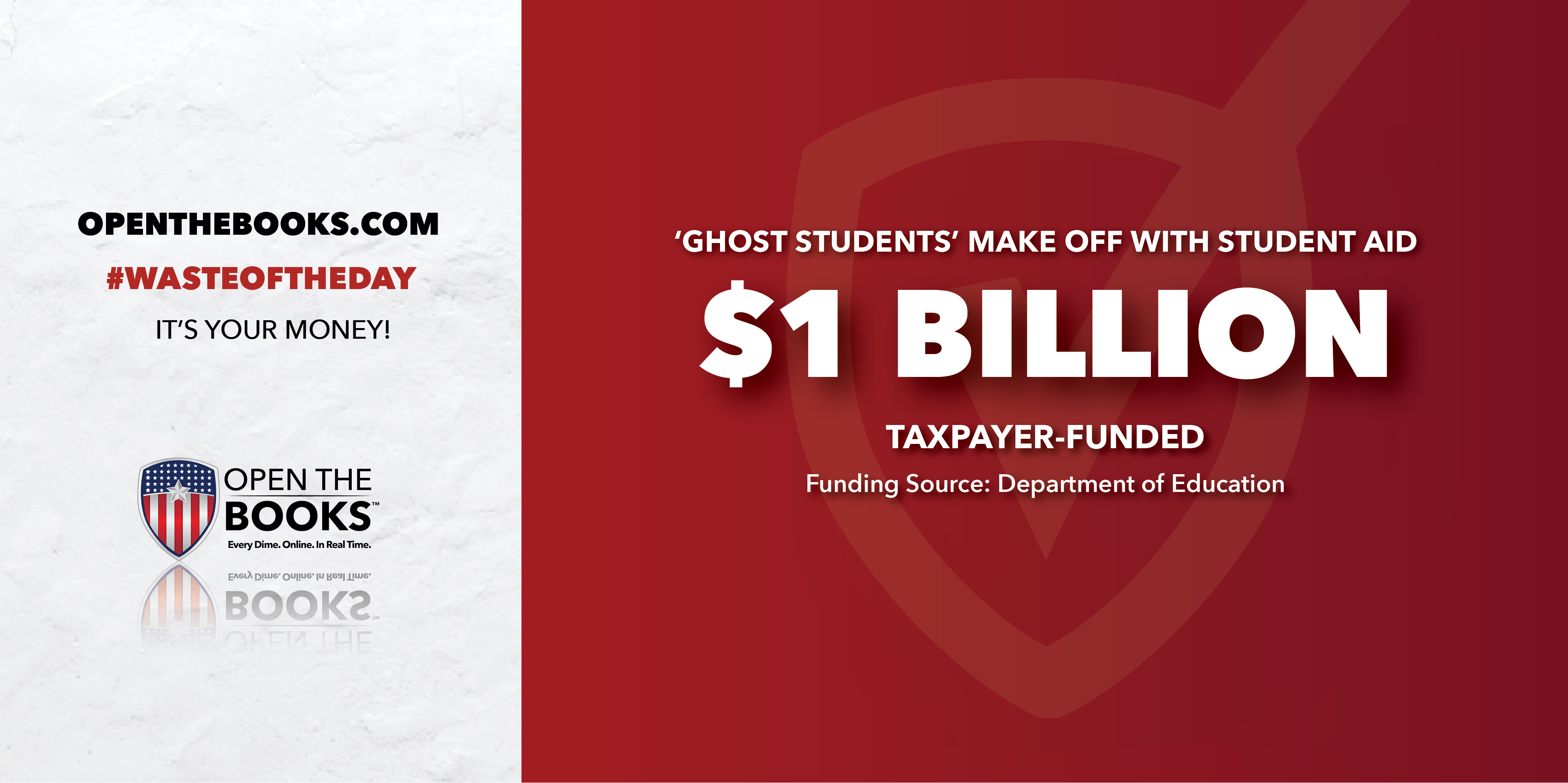Waste of the Day: California’s Fake College Students Collect Funds
Topline: There were 40 students enrolled in Professor Kim Rich’s class at Pierce College in Los Angeles this spring, but only 16 of them were real people. The rest were “ghost students” — people using fake identities enrolled in online college courses to fraudulently obtain federal student aid.
Across the state, 31% of all applications to community colleges were fraudulent and were blocked from admission last year, according to the California Community College Chancellor’s Office. The office claims only a tiny fraction of fake students got through and $13 million was lost to fraud from March 2024 to March 2025. But an investigation by Open the Books suggests the actual cost may be much higher.
Key facts: Rich has been tracking fake students in her criminal justice classes for years. She traced one account to Kenya and to other overseas criminal enterprises. One fraudster received financial aid using the identity and image of a 24-year-old who died on September 11. Other students registered with obviously fabricated names, including those that contain punctuation marks or numbers.

Chris Ferguson, executive vice chancellor of finance and strategic initiatives at the Chancellor’s Office, told Open the Books that only a “nanoscopic” number of fake students make it through the application process.
Still, there are over 4,000 online classes just in the nine schools of the Los Angeles Community College District. If each class had even one student collecting the average $5,000 federal financial aid award, the annual fraud would exceed $20 million. That’s before including the remaining 107 community colleges in California.
Rich said she is probably “totally underestimating … If I can go through my rosters and eliminate 50% of my class, I can’t be the only class in the entire college this is happening to.”
The federal Department of Education has also been vague how much money is lost to fraud. A May 2025 analysis found $90 million of student aid paid to ineligible recipients across the U.S. In August, Education Secretary Lindon McMahon claimed the actual number could be as high as $1 billion, though the Department of Education did not answer Open the Books’ questions about how that was calculated.
There have been some efforts to clean up the fraud. California voted in June to audit three colleges to find how much fraud there is. Nine Republicans representing California in Congress wrote a letter asking McMahon and Attorney General Pam Bondi to launch investigations. Since then, the Education Department says it’s going to start requiring that ID be shown to college officials when students apply for federal student aid.
Ferguson said the chancellor’s office has rolled out some fraud detection tools, including using AI to identify fraud. Colleges are encouraged but not required to use the platform ID.me to verify identities. The chancellor’s office is in the process of implementing mandatory ID verification that would likely be used for the first time in the winter semester.
Search all federal, state and local salaries and vendor spending with the world’s largest government spending database at OpenTheBooks.com.
Summary: Every advancement in technology makes fraud more sophisticated and difficult to detect. That means the government must adapt its fraud prevention techniques just as quickly






